Rubble to Reef Marine conservation in Pom Pom Island, Malaysian Borneo
How artificial reefs have rehabilitated a once barren ecosystem.
The first thing that comes to mind when you think of the coral triangle is colorful, flourishing reefs, filled with life, from the smallest fish to the biggest shark. Fortunately in many locations this is true, however certain parts of the region have been heavily affected by unsustainable fishing practises.
Pom Pom Island, located on the east coast of Sabah, Malaysian Borneo is one of these
places. Although these practices do not take place on Pom Pom Island anymore, it left the island reef decimated, leaving mainly death and decay. Until 2013 when TRACC was established on the island in an attempt to bring back what once was.
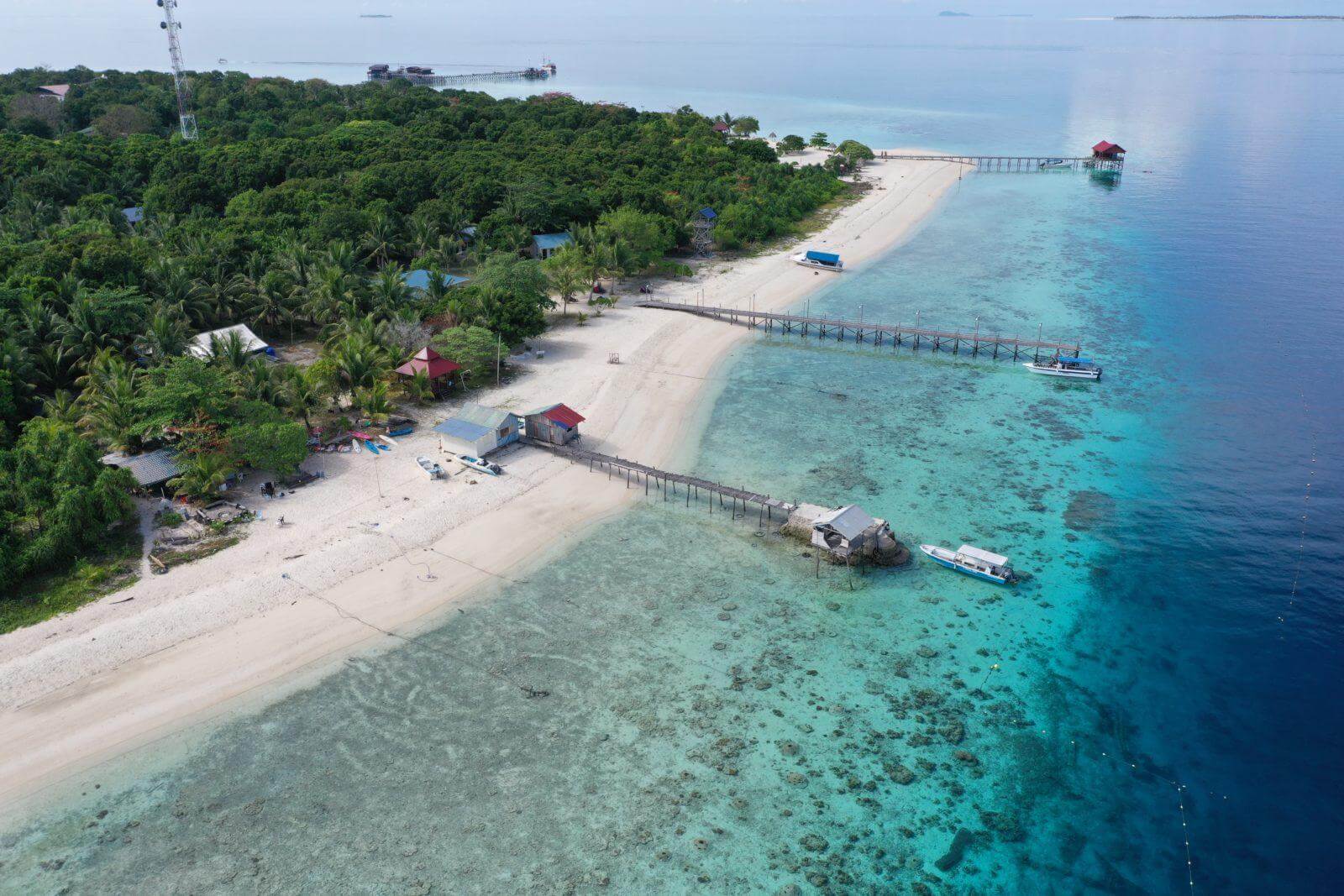
TRACC, (The Tropical Research And Conservation Centre) is based on the western side of Pom Pom Island, and takes volunteer divers year-round to assist in our work. We have developed and executed numerous projects related to marine conservation, turtle hatchery management, and coral reef restoration.
One of the biggest issues faced on Pom Pom Island is the steep slope on the western side of the island.This slope is blanketed by small, loose fragments of dead coral skeletons, known as rubble. This prevents new coral from forming a new reef naturally. Once coral recruits have settled and grown on the rubble, they tumble down the slope due to their weight and the instability of the substrate.
Upon tumbling, corals fall to greater depth where they receive less light or are smothered and buried. Either way, they inevitably die and become part of the everlasting rubble slope. Due to this recurring process the reefs on Pom Pom Island are made entirely out of mobile coral rubble substrate which has shown no signs of natural recovery.
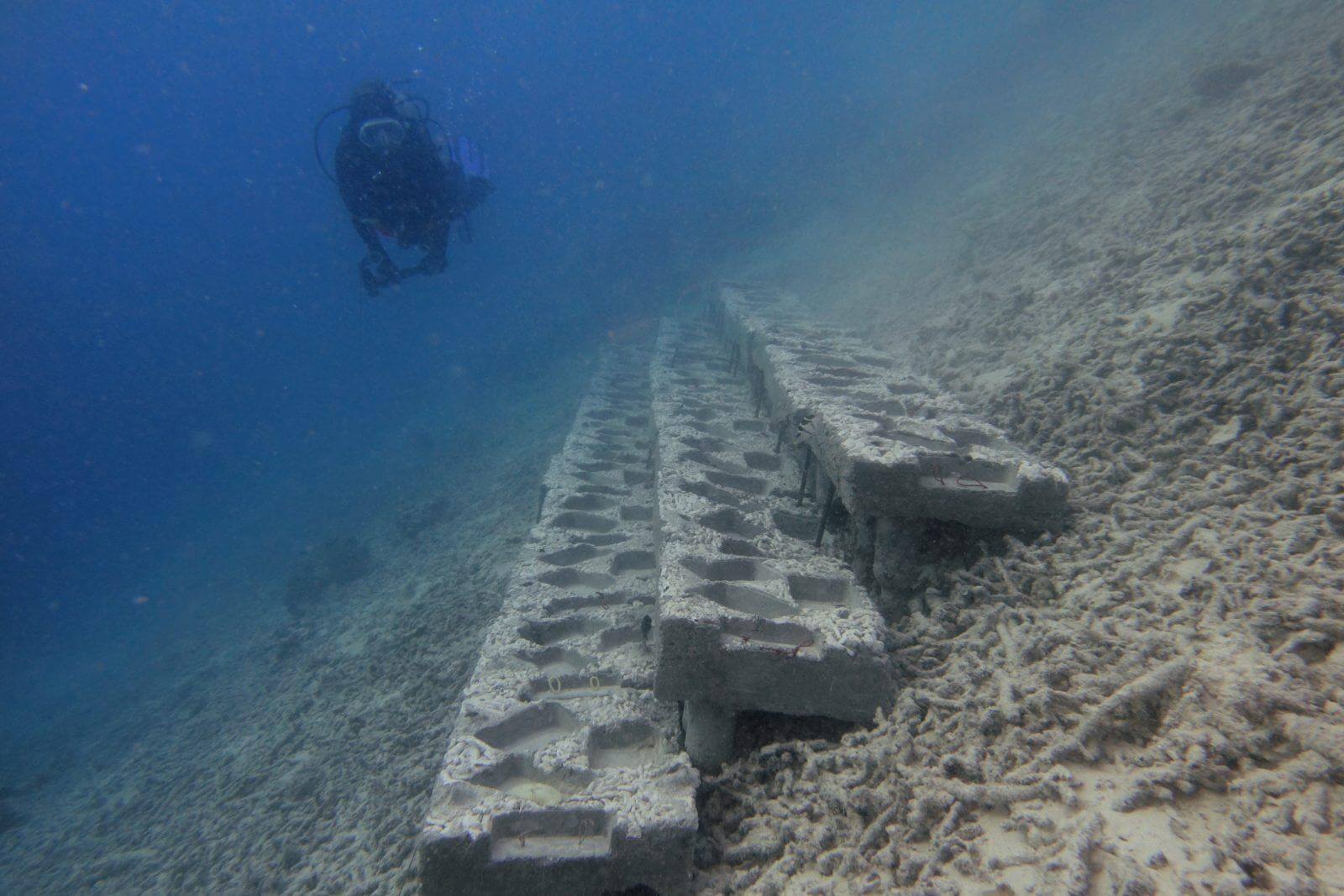
Together, TRACC’s scientists, volunteers and local staff have put in countless hours of work to regenerate the ecosystem. The lack of stable substrate is the main challenge that is faced. In order for the fish populations to return, a stable substrate has had to be created to give the coral the opportunity to settle and grow. Below are three examples of TRACC’s projects which achieve this goal.
Coral Biscuits
Living but broken coral fragments (corals of opportunity) lay on the substrate with a high risk of mortality. These corals are retrieved and secured onto a 15x10cm concrete base known as coral biscuits, this provides a much higher chance of recovery. Corals are placed into wet cement and left to harden underwater. After approximately a year in a designated coral nursery, the healthy coral biscuits are transplanted into artificial reef structures such as the ARC Modules and Step reef units .
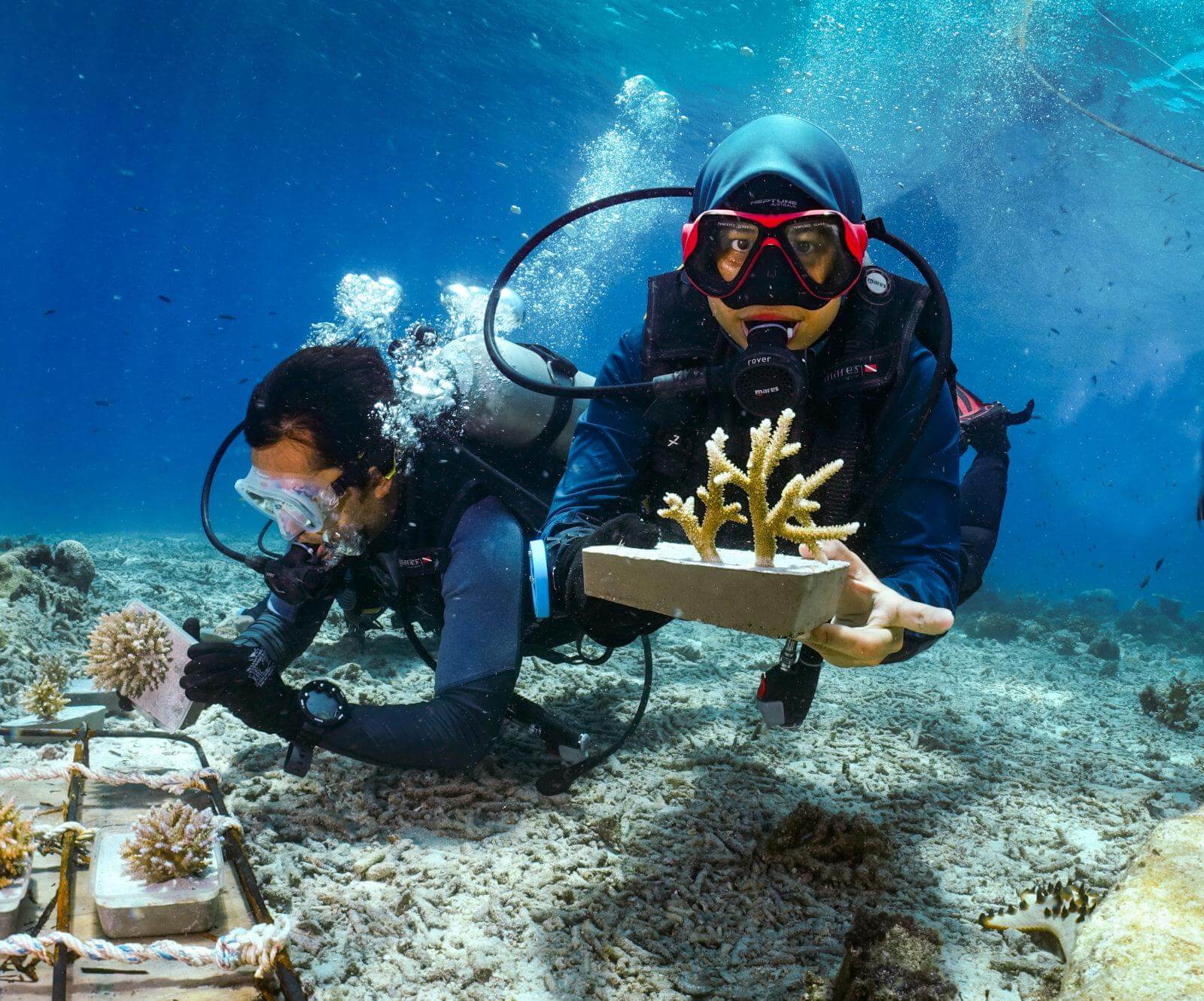
Artificial Reef Crest (ARC) Modules
Years of unsustainable fishing practises left a reef crest that was unable to recover naturally.
An unstable reef crest creates underwater land-slides, causing the loose coral rubble to smother deeper reefs through sedimentation. Hence, artificial intervention is needed to provide a stable substrate for subsequent reef recovery.
TRACC developed a cost effective modular ARC system, made from a concrete mix that includes coral rubble and sand, micro-silica and gravel all for the price less then a large coffee. The units function as a physical support to the reef crest while at the same time providing opportunity for larval coral to settle and mobile organisms to call the module “home”. Coral biscuits are placed into designated slots functioning as a cheap and easy coral restoration method.
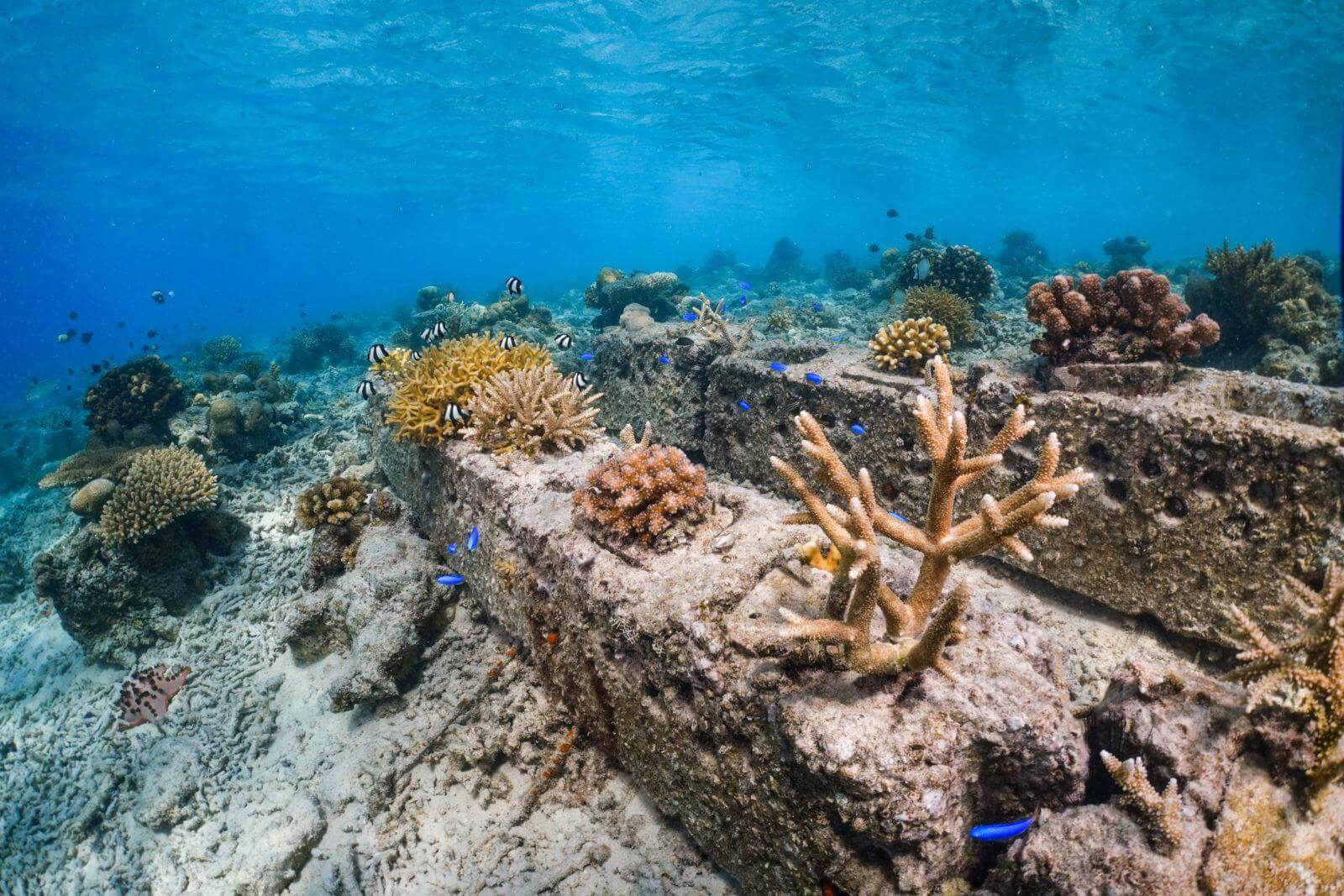
Step Reef Units
Step Reef Units are installed on the damaged reef slope in order to provide a stable base for larval coral recruitment and three dimensional habitat for fishes and invertebrates. Coral biscuits are planted on the surface of each unit to immediately increase the coral cover on a barren reef slope. These units are made with the same aggregate mixture as the ARC Modules but also recycle discarded glass bottles.
Six glass bottles per unit form the legs of the ‘step’, allowing it to sit horizontally on a 60 degree slope. Over time, natural recruitment builds up, due especially to the unit’s high structural complexity. An upcycled fishing net is placed over the substrate above the project site to prevent up-slope coral rubble from tumbling down the slope and smothering the planted coral. The net is often planted with loose soft corals to increase biodiversity and help with substrate stabilization since soft corals overgrow and bind loose substrate.
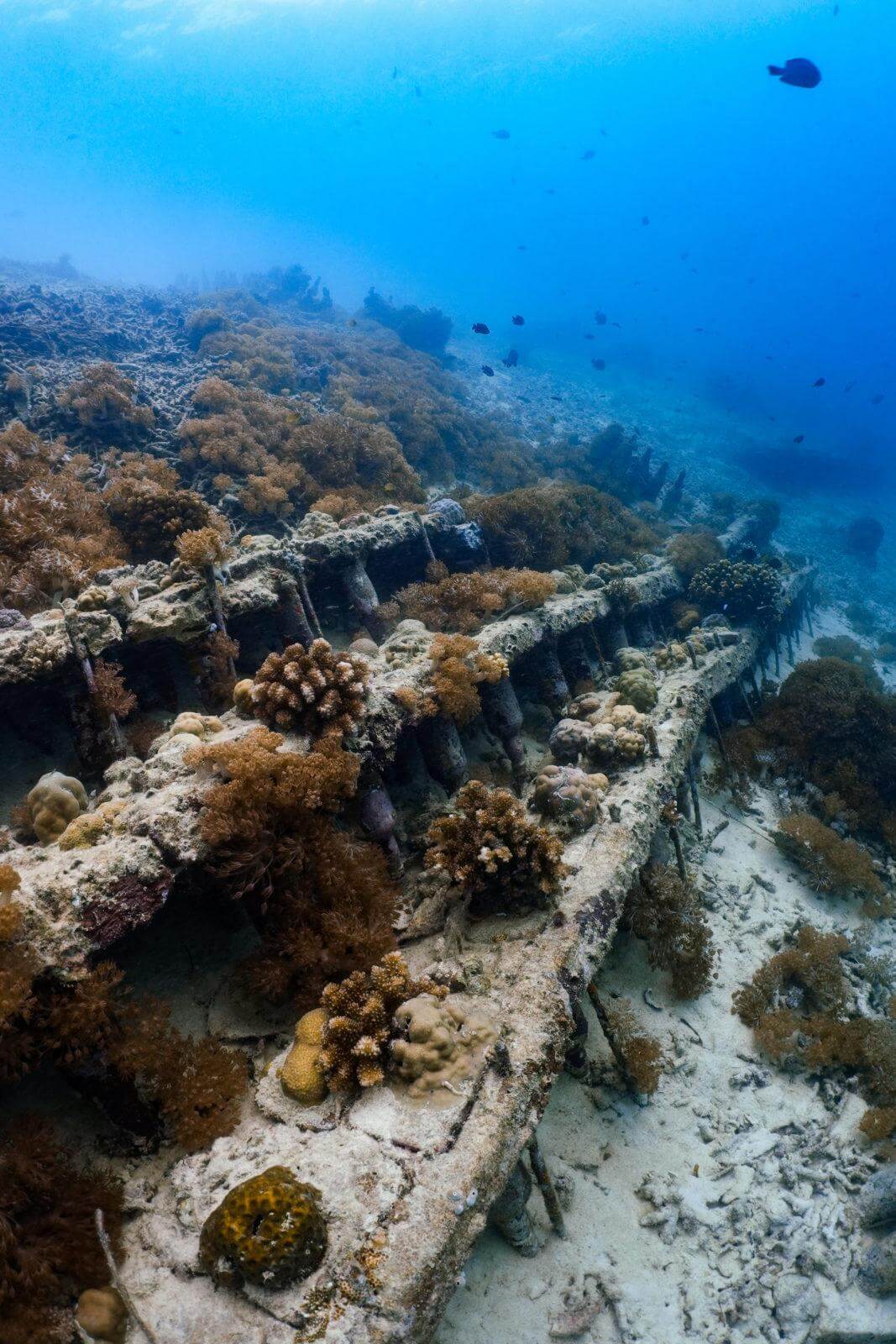
The results of our restoration are simply astonishing. Research has shown an almost 80% increase in biodiversity, abundance compared to the original rubble. This change, from almost no life to a diverse and thriving ecosystem, has been recorded by the TRACC science team. They teach the volunteer divers the principles of marine surveying and how to identify the ever growing community of fish and invertebrate species. In this way the success of the restoration work can be monitored and quantified.
After nearly eight years of work we are witnessing changes that seemed impossible.The difference in the reef is almost indescribable and honestly, at times breathtaking. Where there was once nothing but a vast barren rubble slope there is now a thriving reef community.
By using the artificial reef substrate, to build the ecosystem back up TRACC has been able to reassemble a functional food web. Where predators, like groupers, once were not present, the science team has now recorded 29 of the 50 total species found in the coral triangle! Coral Catsharks are being spotted on almost every night dive while even a small population of juvenile blacktip reef sharks are regularly sighted in the shallows!
By harnessing the power of many people to make a contribution to TRACC’s work we have been able to build an entire reef system starting with nothing but rubble. Some volunteers come for months; either as experienced divers or just learning , loving living the beach life long term, whilst others are able to commit just a few weeks’ work. Guided by TRACC’s team of scientists and dive professionals they are all able to learn the skills necessary and make a difference.
So let us divers/snorkelers, as a society of people who love, depend and rely on the oceans, come together for the protection and conservation of the world beneath the waves.
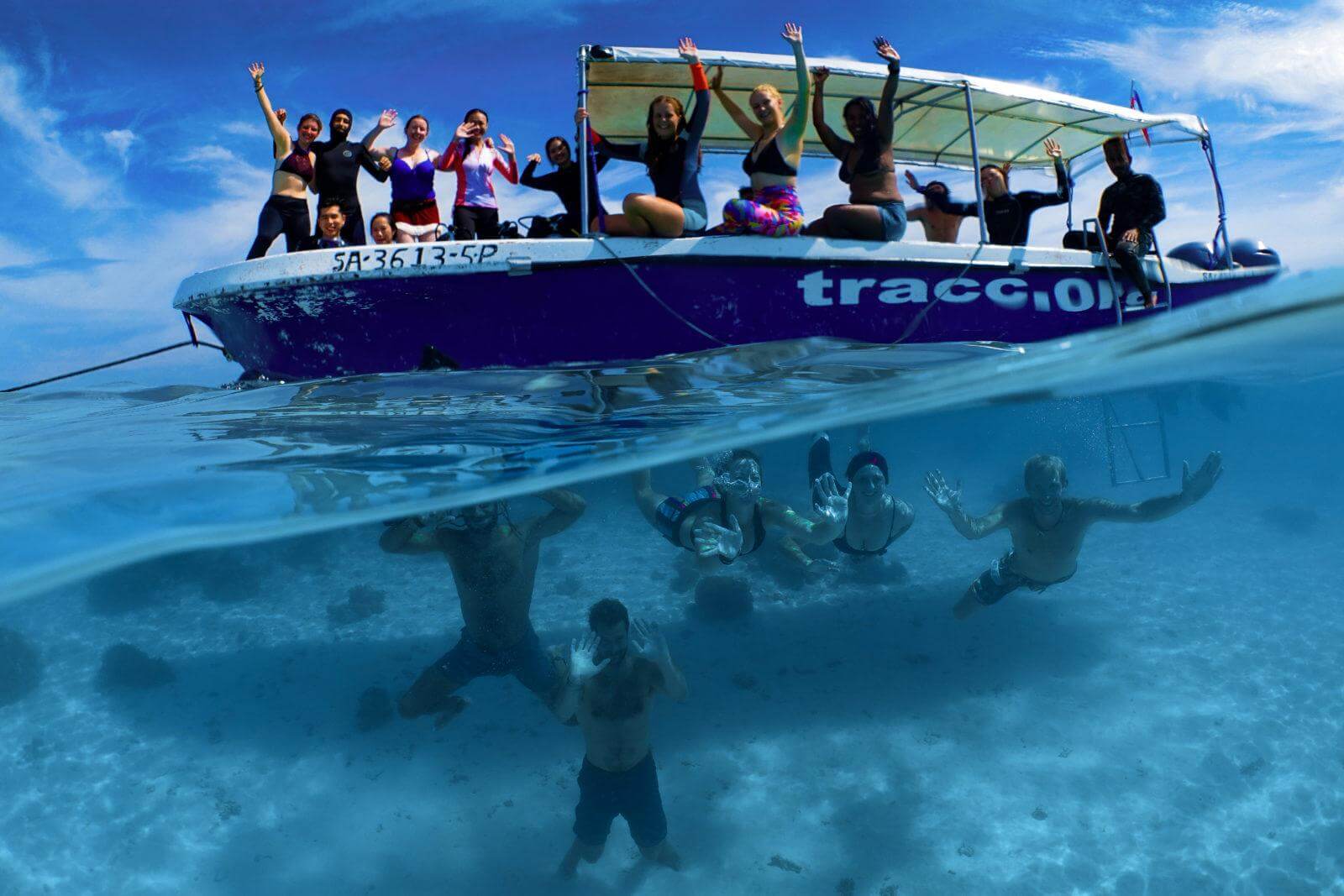
TRACC welcomes volunteer divers (or those who wish to learn) from all over the world.
Follow them on Instagram and Facebook.
Words by Robin Philippo
Director of Operations at TRACC
Email: robin.philippo@tracc.org
Photos by
Robin Philippo, David Palfrey & jeethvendra kirishnamoorthie
Want more conservation-related articles?
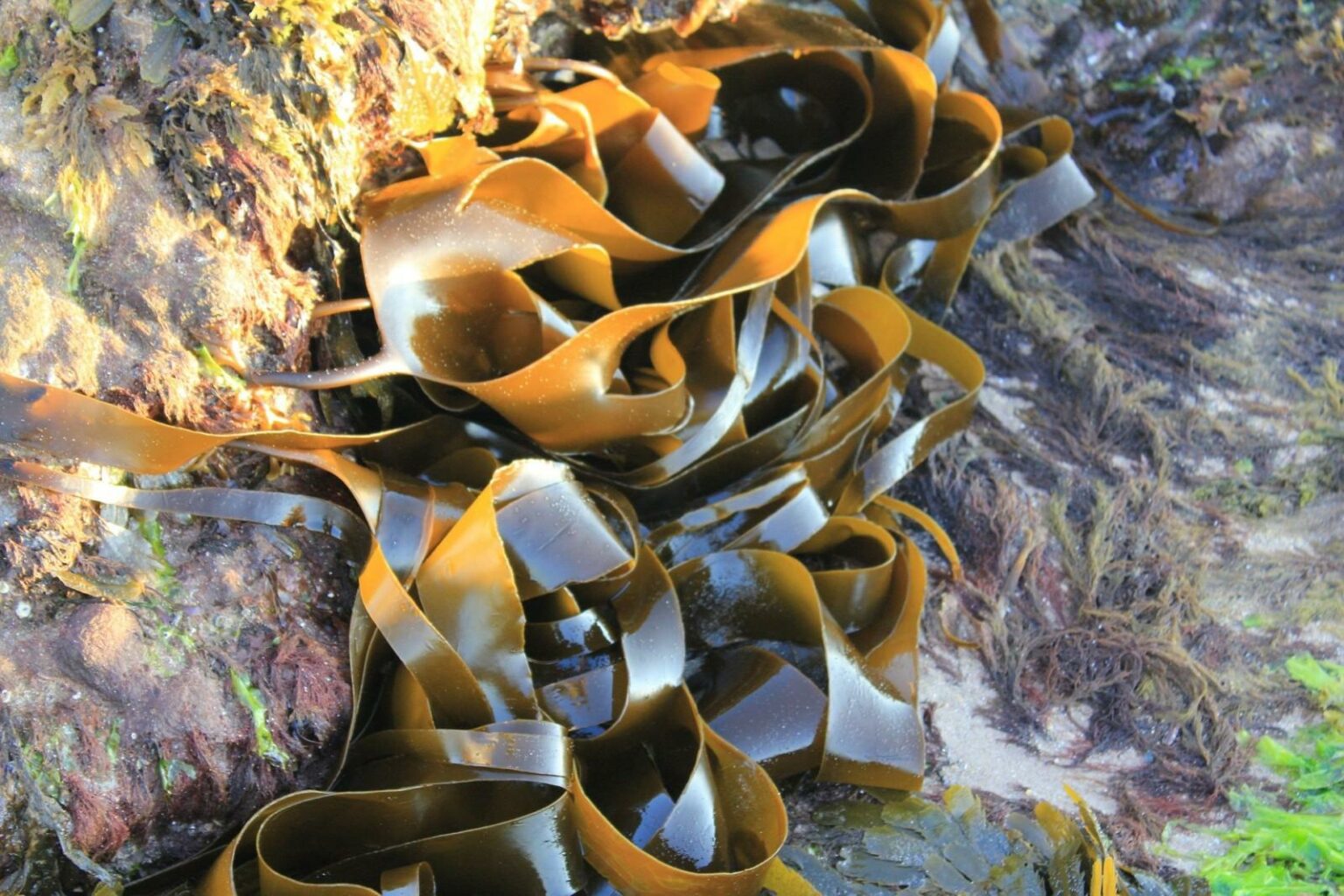








hey,how can i join the volunteer diver?